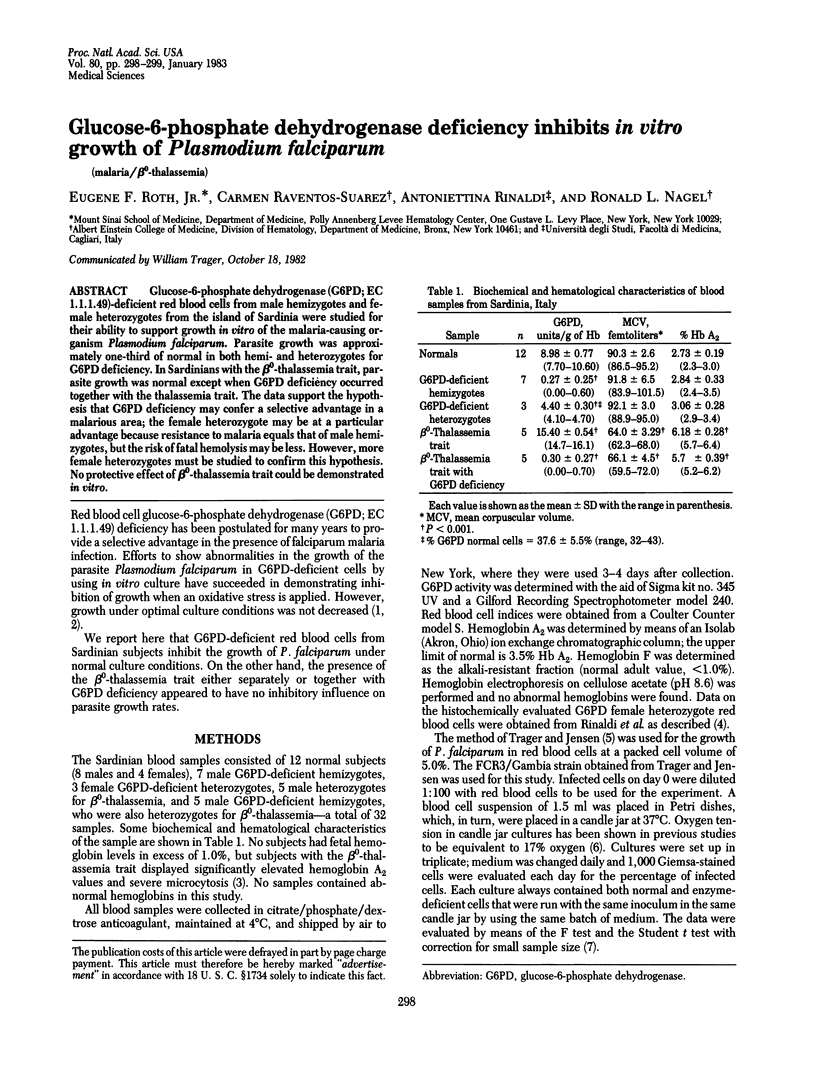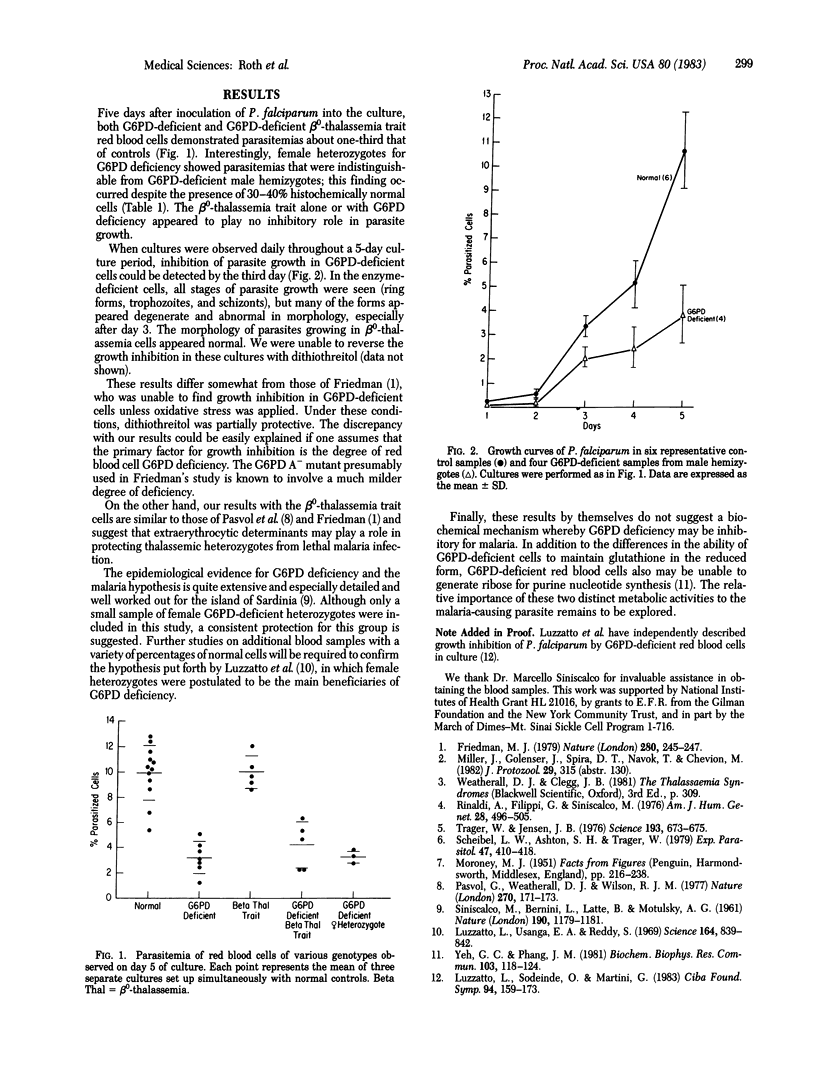Abstract
Glucose-6-phosphate dehydrogenase (G6PD; EC 1.1.1.49)-deficient red blood cells from male hemizygotes and female heterozygotes from the island of Sardinia were studied for their ability to support growth in vitro of the malaria-causing organism Plasmodium falciparum. Parasite growth was approximately one-third of normal in both hemi- and heterozygotes for G6PD deficiency. In Sardinians with the beta 0-thalassemia trait, parasite growth was normal except when G6PD deficiency occurred together with the thalassemia trait. The data support the hypothesis that G6PD deficiency may confer a selective advantage in a malarious area; the female heterozygote may be at a particular advantage because resistance to malaria equals that of male hemizygotes, but the risk of fatal hemolysis may be less. However, more female heterozygotes must be studied to confirm this hypothesis. No protective effect of beta 0-thalassemia trait could be demonstrated in vitro.
Full text
PDF

Selected References
These references are in PubMed. This may not be the complete list of references from this article.
- Friedman M. J. Oxidant damage mediates variant red cell resistance to malaria. Nature. 1979 Jul 19;280(5719):245–247. doi: 10.1038/280245a0. [DOI] [PubMed] [Google Scholar]
- Luzzatto L., Sodeinde O., Martini G. Genetic variation in the host and adaptive phenomena in Plasmodium falciparum infection. Ciba Found Symp. 1983;94:159–173. doi: 10.1002/9780470715444.ch10. [DOI] [PubMed] [Google Scholar]
- Luzzatto L., Usanga F. A., Reddy S. Glucose-6-phosphate dehydrogenase deficient red cells: resistance to infection by malarial parasites. Science. 1969 May 16;164(3881):839–842. doi: 10.1126/science.164.3881.839. [DOI] [PubMed] [Google Scholar]
- Pasvol G., Weatherall D. J., Wilson R. J. Effects of foetal haemoglobin on susceptibility of red cells to Plasmodium falciparum. Nature. 1977 Nov 10;270(5633):171–173. doi: 10.1038/270171a0. [DOI] [PubMed] [Google Scholar]
- Rinaldi A., Filippi G., Siniscalco M. Variability of red cell phenotypes between and within individuals in an unbiased sample of 77 heterozygotes for G6PD deficiency in Sardinia. Am J Hum Genet. 1976 Sep;28(5):496–505. [PMC free article] [PubMed] [Google Scholar]
- Scheibel L. W., Ashton S. H., Trager W. Plasmodium falciparum: microaerophilic requirements in human red blood cells. Exp Parasitol. 1979 Jun;47(3):410–418. doi: 10.1016/0014-4894(79)90094-8. [DOI] [PubMed] [Google Scholar]
- Trager W., Jensen J. B. Human malaria parasites in continuous culture. Science. 1976 Aug 20;193(4254):673–675. doi: 10.1126/science.781840. [DOI] [PubMed] [Google Scholar]
- Yeh G. C., Phang J. M. The stimulation of purine nucleotide production by pyrroline-5-carboxylic acid in human erythrocytes. Biochem Biophys Res Commun. 1981 Nov 16;103(1):118–124. doi: 10.1016/0006-291x(81)91668-5. [DOI] [PubMed] [Google Scholar]


